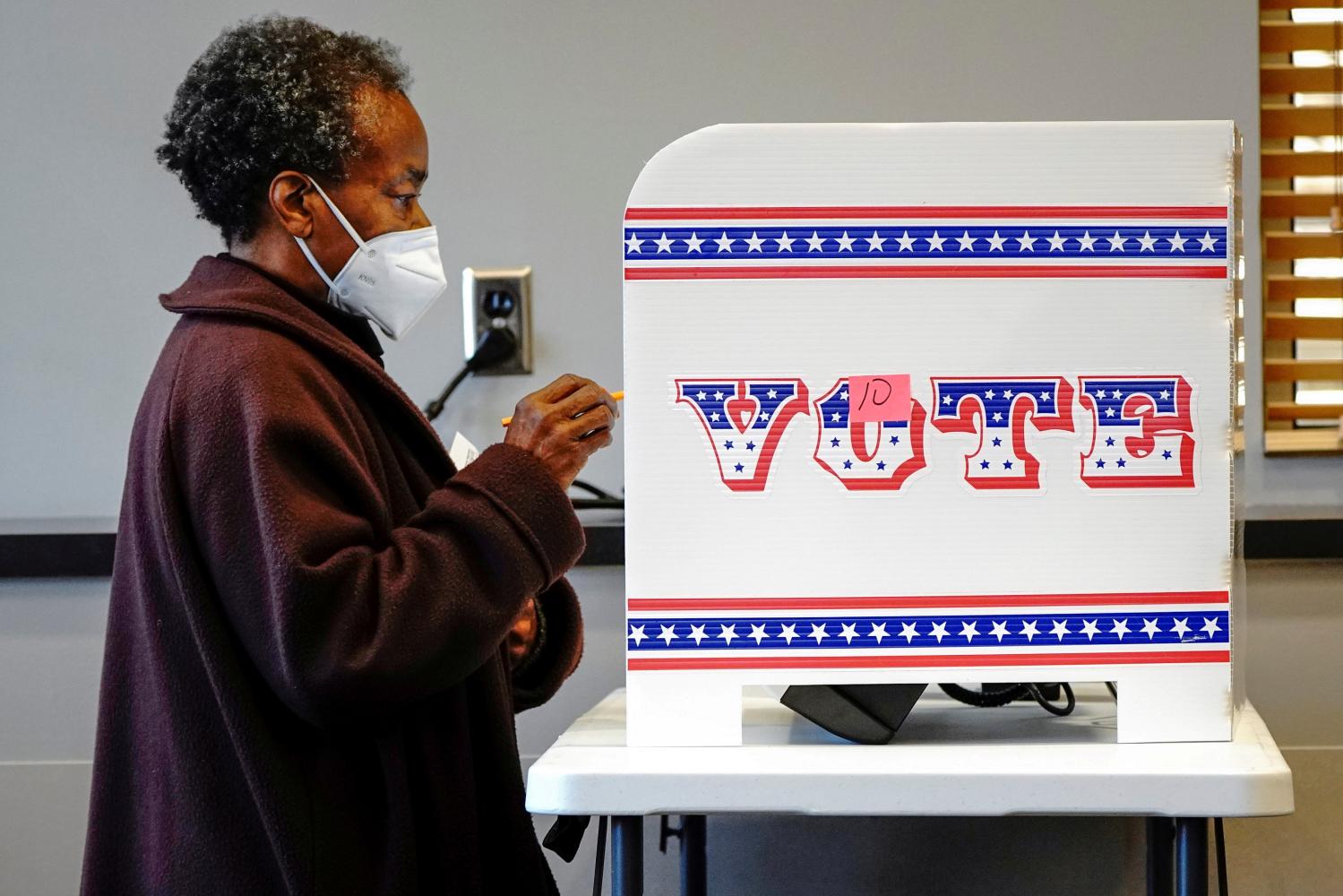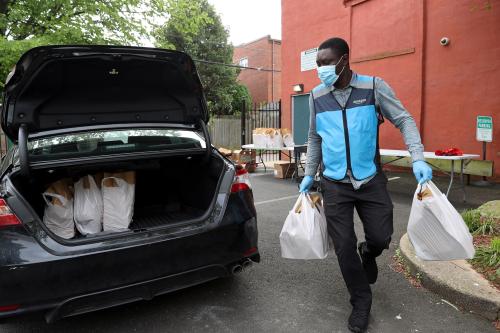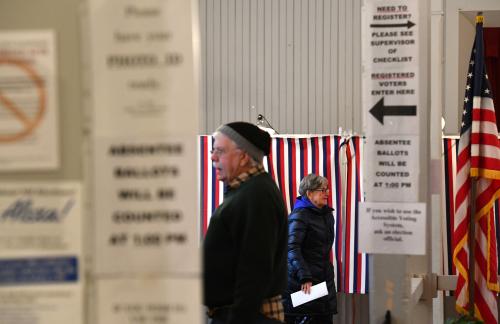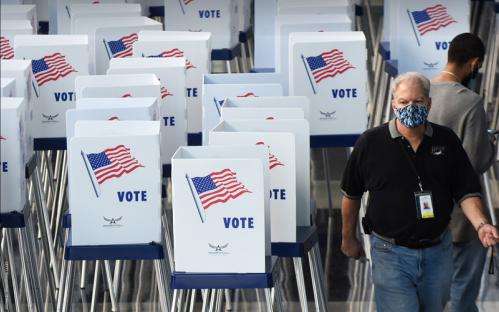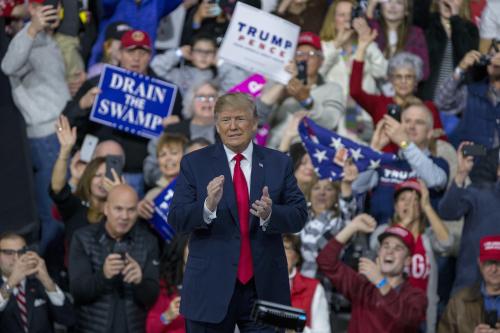The data appendix in this brief has been updated to reflected ongoing, unofficial results as of Friday, November 6. Additional data appendix updates are forthcoming.
This election year, voters are turning out in record numbers. Their enthusiasm will decide not only which party controls the White House and Congress, but also the fate of more than 120 state ballot measures, and many more at the city and county level. As leaders grapple with the mounting challenges of the COVID-19 recession and persistent inequality, this year’s ballot measures provide important clues into how states and localities are responding to fiscal, economic, and social distress.
Over the years, state and local leaders have increasingly turned to ballot measures as a vehicle for raising revenue or pursuing reforms as they become less reliant on the federal government for help. This year was unusual in that the total number of state ballot measures was significantly lower than in the past, potentially due to social distancing measures that limited citizens’ capacity to organize and file them. That said, this year’s ballot referenda still offer an interesting window into the policy experimentation and problem-solving happening outside of Washington.
We found that many local jurisdictions are weighing measures that aim to usher in good jobs, fairer incomes, and below-market housing in an age when technology has concentrated and divided wealth in cities and regions. The increased demand to value Black and brown lives has motivated a number of jurisdictions to tackle police accountability and criminal justice reform. Threats and opportunities from climate change have prompted several communities to invest in renewable energy and adapt to climate disasters. And some states are asking voters to determine whether to change taxing measures to give local communities and states more fiscal capacity to manage current and lingering needs.
Here are highlights of the local and state ballot measures we’ll be following. A more complete list of selected measures can be found in the appendix, where we will also post final results.
Housing affordability in high-cost markets
Prior to the pandemic, many of the nation’s high-tech meccas were struggling with high housing costs, limited supply, and rising numbers of residents falling into homelessness. In response, many local ballot measures in the West seek resources to mitigate these challenges. Voters in San Francisco, Denver, and San Diego will decide on a mix of new bond financing and tax increases to pay for transitional supportive housing facilities, homeless shelters, and related services. In King County, Wash., home of Seattle, voters will decide whether to give the county greater flexibility to repurpose existing properties for affordable housing.
In contrast, San Mateo, Calif. voters will decide on two measures to continue limiting future development. A citizen initiative aims to maintain status quo limits on new construction, while a city council measure maintains current policies with proposed exceptions to new developments in key areas such as near transit hubs, where increased density and zoning changes could be considered without requiring voter approval.
Criminal justice reforms and police accountability
This year’s ballots include a number of state efforts to redress the history of slavery and make inroads on criminal justice reform, as summarized here and here. A few local measures deserve a close look as well.
For instance, ballot measures in at least six jurisdictions—Columbus, Ohio, Philadelphia, Pittsburgh, Portland, Ore., San Diego, and King County, Wash.—propose creating an independent panel or citizen commission to provide greater oversight and accountability on local law enforcement, in some cases including the review of officer-involved shootings and deaths.
Meanwhile, two communities have put law enforcement funding on the ballot. In Los Angeles County, one measure proposes that the county dedicate at least 10% of the general fund to alternatives to incarceration, such as job training, mental health services, and substance abuse treatment. In DuPage County outside of Chicago, the county board is seeking voter input through two “advisory referenda” to—as one analyst suggests—test voter preferences for prioritizing or defunding the police.
Good jobs and worker well-being
This year, several statewide ballot measures are testing the definition of a “good job” in today’s pandemic-battered economy. Colorado’s Proposition 118 is the first time a state is using the ballot measure process to establish and finance a program for paid family and medical leave. Meanwhile, California’s Proposition 22, which has spurred one of the most expensive campaigns in the state, is asking voters to determine if Uber, Lyft, and other app-based drivers should be defined as employees or independent contractors. If independent contractors, drivers will receive some new benefits, but the state’s labor and wage policies for employees—which guarantee better benefits and protections—would not apply.
In Florida, Amendment 2 asks if the state should raise the minimum wage from $8.56 per hour to $15 per hour by 2026. If approved, this would be a big step forward, considering that the living wage for a family of four in Florida is about $16 per hour. With both businesses and workers suffering from the dramatic impact of the COVID-19 recession on the state’s economy, the measure is drawing mixed reactions and will require 60% voter approval in order to be adopted.
Infrastructure, redevelopment, and climate change
As Brookings Metro has written previously, investments in infrastructure and green spaces are popular priorities in ballot measures. This year offers a glimpse of how local and state leaders are grappling with what our colleagues call the “21st century challenges” in our built environment and natural resources.
With the pandemic shifting work, schooling, and job searches online, both Chicago and Denver have measures seeking voter interest in expanding broadband internet service to residents, including increasing local government capacity to do so.
Seattle, Portland, Ore., Austin, Texas, and Santa Clara, Calif. are going to their voters to seek new investment in mass transit and pedestrian-oriented options, hoping to increase travel choice and create fiscal sustainability for capacity expansions and ongoing operations.
In Utah, a group of mayors are advocating for Amendment D, which would provide greater flexibility to local jurisdictions to provide water service to residents outside their borders—a common practice in regions across the country.
Both Detroit and the state of Nebraska are asking voters to provide financing tools and incentives to support blight remediation and redevelopment in distressed areas, which would help concentrate development and opportunity in existing places.
And while President Trump recently claimed that clean energy initiatives will cost jobs, a mix of states and localities are hoping voters will double down on efforts to diversify the nation’s energy sources and protect the environment. In Nevada, voters will decide whether to double the state’s Renewable Portfolio Standard (RPS), creating a constitutional guarantee that the state get at least 50% of its power from renewable sources. Columbus, Ohio’s Issue 1 would commit the city to using renewable energy to supply 100% of its power needs by 2023. Denver’s Ballot Measure 2A asks voters if they would support a 0.25% tax increase to fund climate-related programs, especially those that will reduce air pollution.
And in a year of major natural disasters, from fires in the West to hurricanes along the Gulf Coast, both California and Louisiana have ballot measures that would provide greater flexibility for homeowners and lawmakers to respond to emergency climate crises.
Greater local fiscal capacity
Finally, three pivotal state measures have the potential to give local jurisdictions greater fiscal capacity to manage current and future needs. Much has been written about California’s Proposition 15, which hopes to remedy the well-known structural fiscal limitations imposed by Proposition 13’s cap on property taxes and revenues. If passed, the reform would raise billions in revenues and increase funding for schools, cities, counties, and local agencies, paid for by reducing the current subsidy to large commercial properties.
Similarly, Colorado’s Amendment B asks voters if they would like to repeal a previous constitutional provision that has kept property taxes low for almost four decades, in order to avoid a fiscal collapse.
In Illinois, Governor J.B. Pritzker came into office calling for tax reform and getting the state’s fiscal house in order. His agenda is embodied in Amendment 1, which asks voters to amend the state constitution to replace its current flat income tax with a graduated income tax—or a “fair tax”—which would provide tax relief for lower- and middle-income workers and significantly increase revenue from wealthier taxpayers.
In sum, while the nation waits anxiously for the results of one of the most consequential presidential elections in history, the results of these below-the-radar ballot measures matter greatly too. Many of them could give leaders across cities and metropolitan areas the tools they need to rebuild better and plan for a more equitable, sustainable future.


